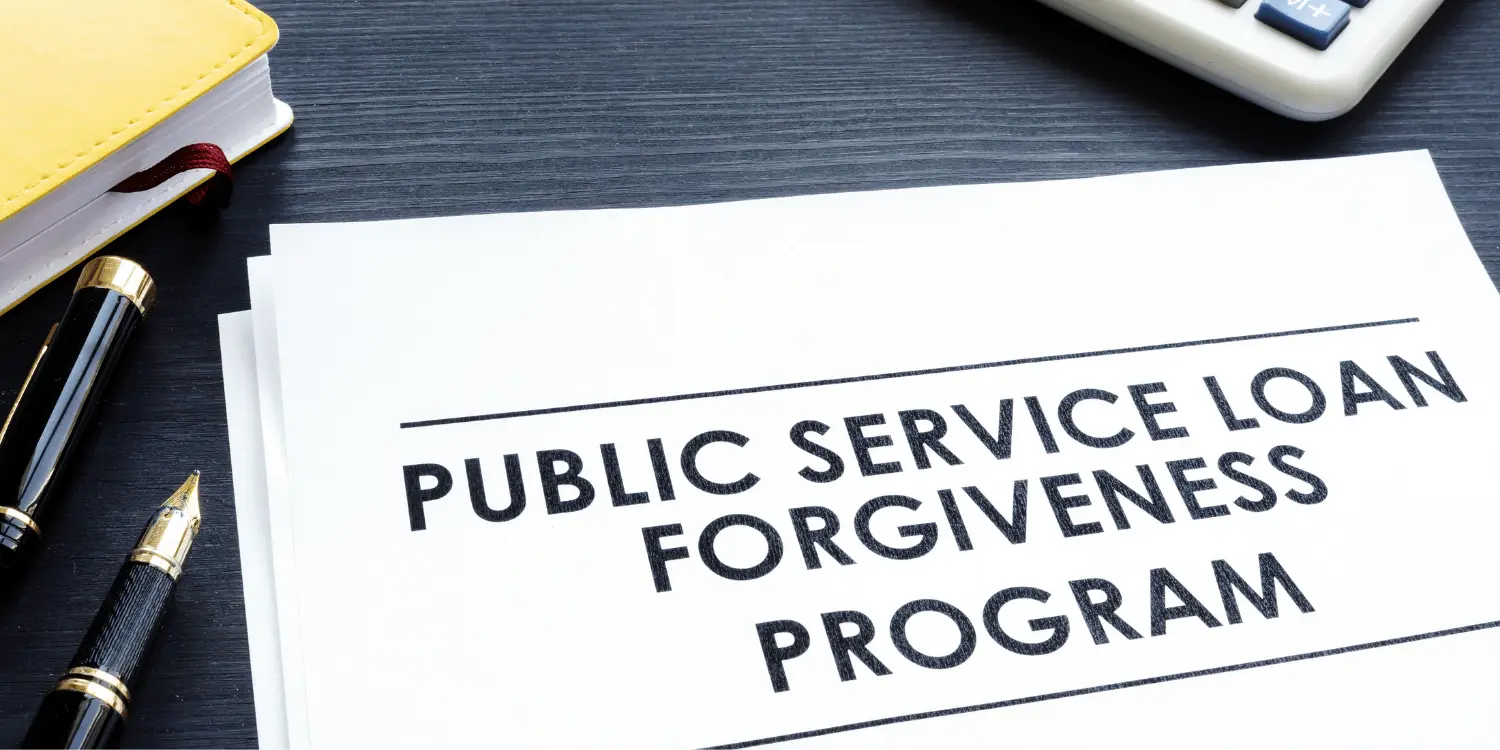
Public Service Loan Forgiveness (PSLF) can help eligible borrowers eliminate student loan debt after working in public service jobs for a set number of years. While the program offers real relief, it can be tricky to navigate. This guide will explain how it works, who qualifies, and how to apply.
Far too many people expect some form of student loan forgiveness to wipe away their debt; read understanding what student loan forgiveness really is to understand why this is a misconception.
Public Service Loan Forgiveness is a federal program that forgives the remaining balance on Direct Loans after 120 qualifying monthly payments. To qualify, you must work full-time for a government or nonprofit employer.
The goal is to reward long-term public service by easing the burden of student loan repayment. If you meet the requirements, your remaining student loan balance could be completely wiped out after 10 years.
For another helpful explanation of how the program works, see the CFPB’s PSLF overview.
To qualify for PSLF, you must:
Private student loans do not qualify. Also, your employer must meet public service criteria, not just your job duties.
Student loan forgiveness under PSLF starts by submitting the Employment Certification Form. You’ll need to resubmit this form each year or when you change employers.
The Department of Education will review your employment and payment history to determine if you’re on track. Once you reach 120 qualifying payments, you can apply for loan forgiveness.
During this process, the federal student aid office may also verify your income, payment plan, and loan type.
Many Americans carry student loan debt into their 30s, 40s, or beyond. PSLF offers a path to reduce that debt, but it only applies to federal student loans. That includes:
If you have Perkins Loans or Federal Family Education Loans (FFEL), you’ll need to consolidate them into a Direct Loan to qualify for PSLF.
-min.webp)
Not all jobs in government or nonprofit sectors qualify for PSLF. Here are some types of employment that do meet the criteria:
You must work full-time, which usually means 30 hours per week or more. Two part-time public service jobs can be combined to meet this requirement.
The Department of Education oversees PSLF and provides tools to help borrowers manage their applications. They also assign a designated loan servicer to handle all PSLF-related matters. Currently, MOHELA is the only servicer for borrowers pursuing PSLF.
Borrowers can track their progress and check eligibility through their online account at StudentAid.gov.
To qualify for Public Service Loan Forgiveness, borrowers must be enrolled in an income driven repayment (IDR) plan. These plans base your monthly payments on your income and family size, making them more affordable than standard repayment.
Common IDR plans include:
You can use the Loan Simulator to estimate your monthly payments under different income-driven plans and see how they affect your PSLF timeline.
Enrolling in one of these plans is essential. If you’re on a standard 10-year repayment plan and make 120 payments, your loan would be paid off anyway, leaving nothing to forgive. With IDR, you make smaller payments and still qualify for forgiveness after 120 payments.
Learn more about choosing the right repayment strategy with our Student Loan Calculator.
PSLF was designed to support people working in public service jobs. These roles are critical to our communities but often don’t come with high salaries. This forgiveness program helps level the playing field for public servants with federal student loan debt.
Jobs that qualify include government workers, nonprofit employees, and those in qualifying 501(c)(3) organizations. Some union or contract roles may also count if the employer meets PSLF requirements.
Loan forgiveness usually refers to programs like PSLF, where loans are discharged after meeting service and payment requirements. Loan cancellation typically happens under different circumstances, such as:
Many borrowers have been denied forgiveness due to avoidable errors:
Always verify your employment status and loan eligibility early. Submit the PSLF Employment Certification Form annually. And if you’re consolidating loans, make sure your new Direct Loan is eligible.
Public service isn’t just about employment; it’s about commitment to community. PSLF recognizes this contribution by offering debt relief to those who serve others. If you’re struggling to manage your student loan, this program could be a life-changing opportunity.
Even if you don’t work in public service, there are other repayment plans and forgiveness options. Visit our student loan assistance page to learn more.
The Department of Education has made temporary changes to improve the PSLF program:
Check StudentAid.gov’s PSLF Help Tool to see how these updates might affect your situation.
Here’s a simple breakdown:
Use the Federal Student Aid portal to manage your account and upload documents.
Borrowers working in education, healthcare, or nonprofit roles may qualify for student loan forgiveness. The Department of Education has made efforts to ensure more borrowers receive credit for eligible payments under the new rules. By reviewing your loan servicer records and applying early, you can avoid missed opportunities. Qualifying employment, monthly payments, and public service work are the keys to success with this program. Don’t forget to explore options for deferment, forbearance, or income-driven repayment if your financial situation changes.
If you’re feeling overwhelmed by student loan repayment or unsure whether you qualify for PSLF, we can help. Credit.org offers expert counseling and tools to guide you through your options.
Whether you need help understanding federal student loans, applying for forgiveness, or managing your monthly payments, our certified counselors are here to support you.
Visit our Student Loan Assistance page to schedule a free consultation today.